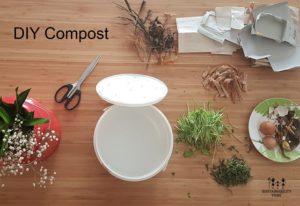When I think about the ‘zero waste lifestyle, I dream of a balanced ecosystem. Lush green landscape in place of garbage areas near each community. Fresher air and close-to-nature living! However, every day as some new products hit the market, we all get overpowered by the marketing tactics and end up buying stuff that we don’t need – electronics, fashion clothing, cosmetics or home interior items, etc. So instead, we keep on increasing our waste – sometimes we give to charity, sometimes we recycle, and at most times we throw unwanted things, thus ending up in the landfill. Wouldn’t a public park be a more appropriate land use than a mountain of waste?
So in the first place, if we shop less, waste will be less. But suppose people suddenly stop buying unnecessary things, which will surely affect the market, employment, and the economy. Moreover, if the old items we need to discard are damaged, they may not be useful for charity. Also, recycling every item is still not available in many places. So the ideal solution is reusing those unwanted items creatively at our home. The added benefit is you save money & can own a unique, personalized home organizing or interior item, which will be the talk of your guests for sure! So I recommend reusing items even for those people who regularly recycle. Because through reusing, we extend the lifecycle of produced items before we recycle them in the end.
To check what can be reused and for what purpose, we need to look at our garbage and our shopping list. Maybe we can remove some items on our shopping list by reusing items we will discard. I did that & believe me; it was fun! However, before we start looking at a big list of items that we can reuse, it’s better to understand in this article what upcycling is and what repurposing is.
The items found in routine garbage from our home are generally these, Plastic/glass jars, containers, bottles, packaging boxes small or large of paper/cardboard, bottles, boxes, toiletry, chemical containers, tin boxes, containers, jars, chipped or broken crockery or ceramic or china wear, takeaway food containers, old clothes, bags, wooden/metal/plastic furniture & accessories.
Many plastic & glass jars with proper lids can be used to store groceries & arranged in your kitchen cabinets. Ex. Rice, pasta, milk drinks, etc., which are packed in bottle or plastic jar, can be bought next time; we can buy the same item packed in a bag & refill the jar.
If you can reuse jars & boxes that come as a package to store all your groceries like pulses, flour, beans, etc., you would never have to buy separate jars for the same purpose. The plastic jars of ice cream and yogurt are also good storage containers once cleaned.
So many packaging glass and plastic jars come with herbs, spice, ketchup, jams, and baby food. We can use the same bottles for using the same items or other appropriate items. However, it is better to wash these bottles once in a while, especially if we use them for a prolonged time. Read here a great way of reusing baby food jars as a return favor for your kid’s birthday.

Big empty boxes of cereals, washing powder, tissue boxes can store carry bags. One opening could be cut in the box, from where we can pull the carry bag out. It is good to reuse also a nice idea for organizing those otherwise voluminous carry bags, which filled up space in a cabinet below our kitchen sink.
After cutting the top side of the box, these boxes can be used as magazine holders or for holding excess wires, assorted things in a storeroom.
Many items like broken earthen/ceramic/glass wear, shoes, tin/plastic containers, paint or chemical containers, ceramic pipes, coconut shells can be used for planting small plants in your garden. Actually, if you grow a plant in anything which can hold the soil & can have a hole or two facilitate excess water to flow, then any waste item in your home can become a beautiful planter. In this photo, old tyers are used as a planter. Read here some great ideas for the creative reuse of household items as planters.
 There could be many creative ways to use the old furniture piece for new applications. I never did it, but I always like the idea of using the old trunk as a side table; it could add an antique touch to the interior. These are some of the photos from other people who reused their old furniture & the result is these amazing art pieces.
There could be many creative ways to use the old furniture piece for new applications. I never did it, but I always like the idea of using the old trunk as a side table; it could add an antique touch to the interior. These are some of the photos from other people who reused their old furniture & the result is these amazing art pieces.Hopefully, after reading this article, some of you have developed an interest in reusing old items, or have you started looking for them in your storeroom or garbage bin already? Let me know how it goes!
Meanwhile, I recommend reading our popular guide to beat plastic pollution, with simple lifestyle changes.
You can also access our self-paced online course, Sustainable Home Masterclass. This training is designed to give attendees a complete guide to sustainable homes, from selecting a property to what changes you can make in your existing property, including budget-friendly options. This course will also introduce green buildings and sustainable material choices. Plus, develop conscious consumption choices to select sustainable household items and develop simple habits for a healthy home. After this course, you will be able to gain enough knowledge to reduce your utility bills and cost elsewhere, improve your family’s wellness as well as contribute to climate action right from your home.

Amruta Kshemkalyani, an expert sustainability professional turned social entrepreneur, is the founder of the Sustainability Tribe, AK Sustainability
Read More >>
Copyright 2025 © Sustainability Tribe, Registered under 'Sustainability Tribe Marketing Management' in the U.A.E., Design by LBM INFOTECH